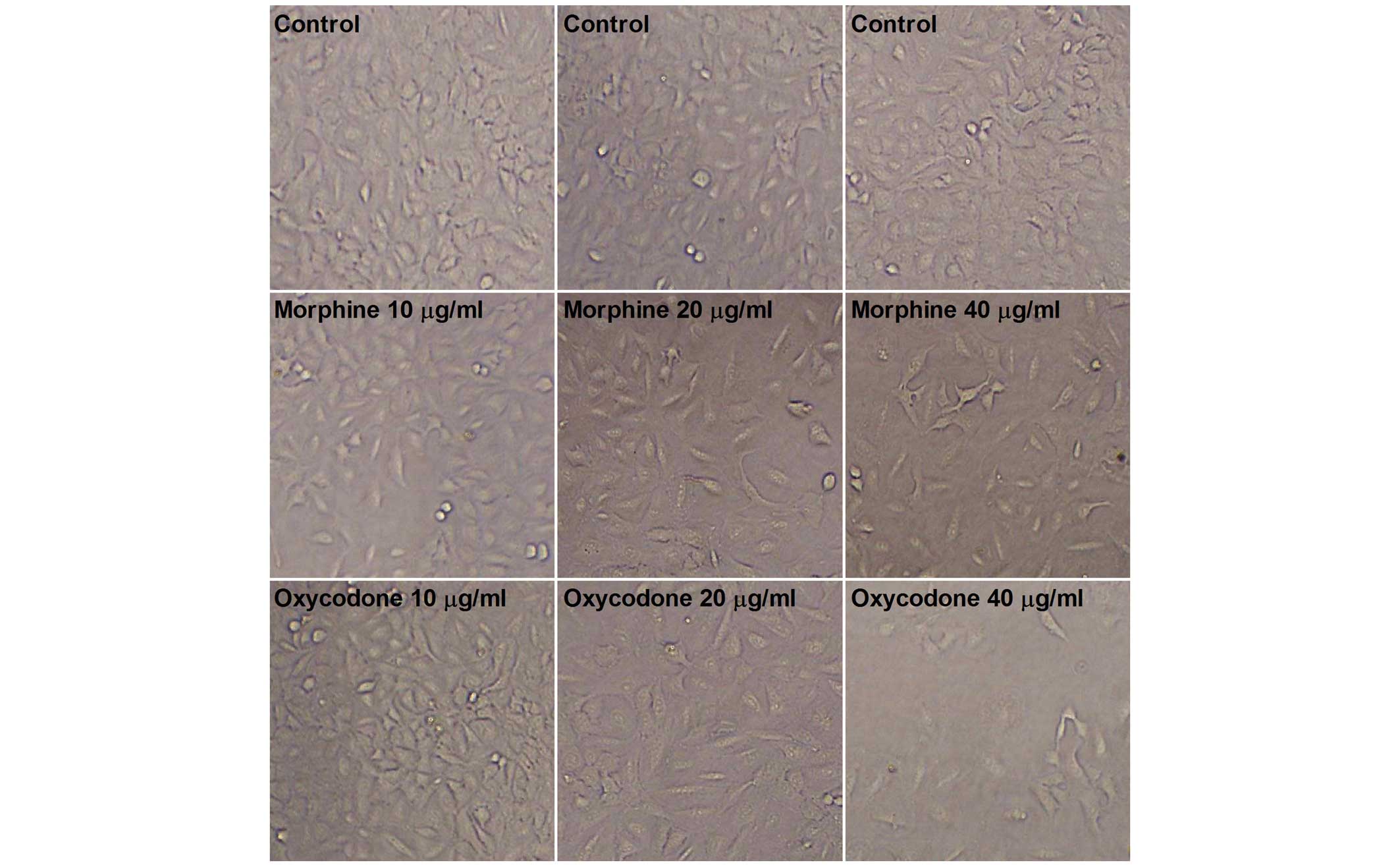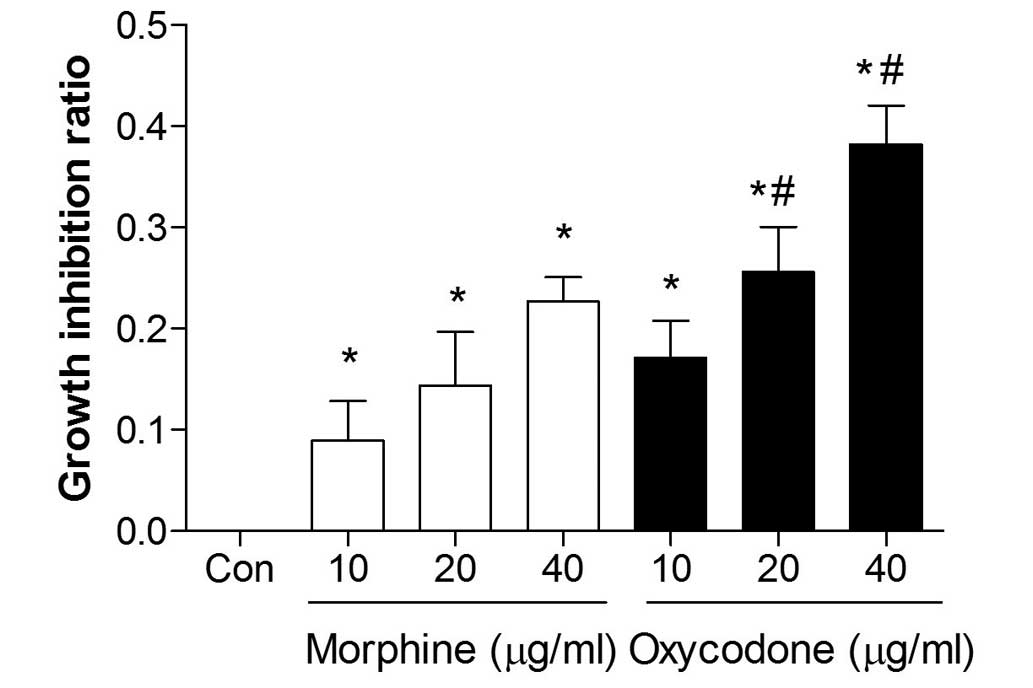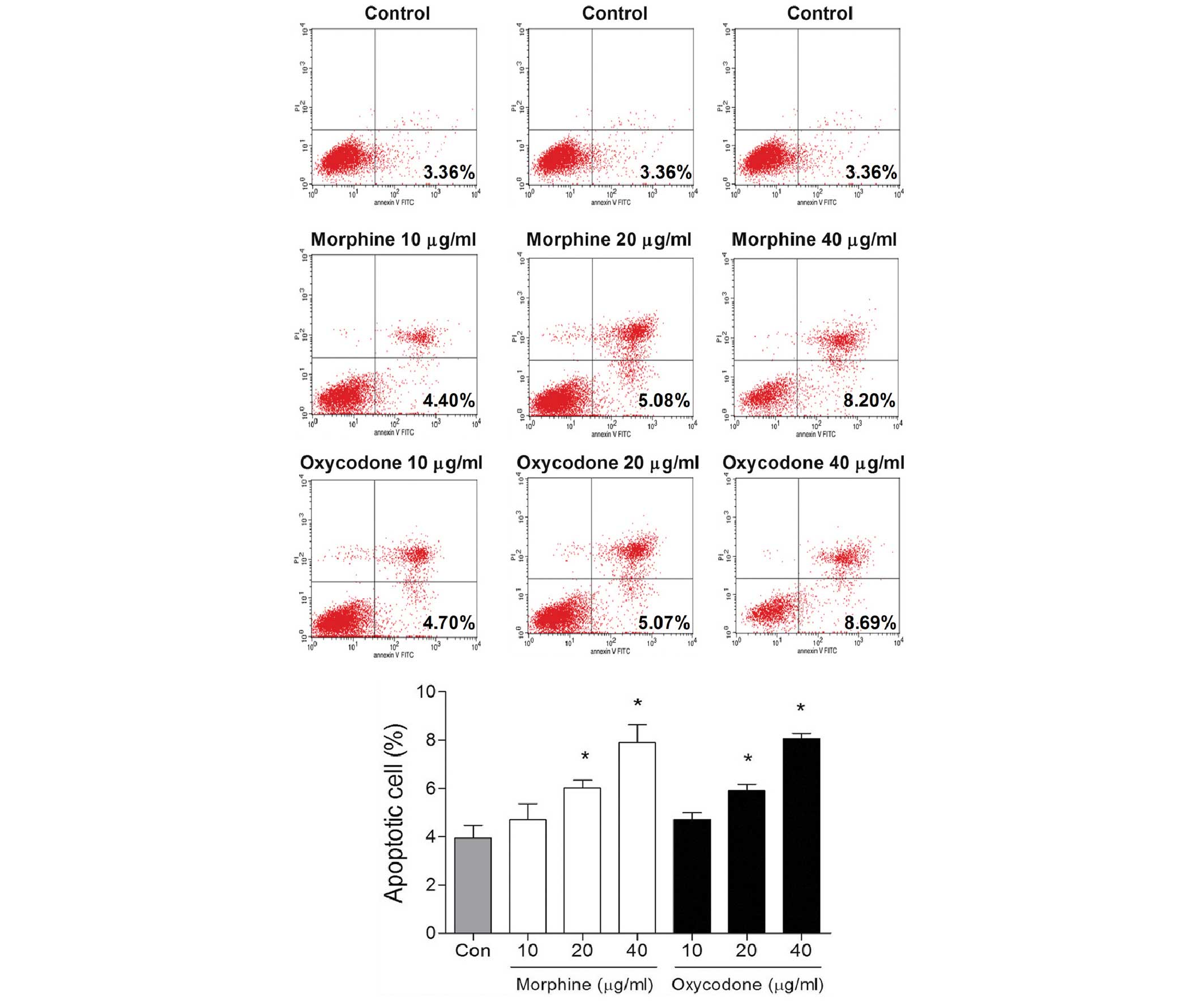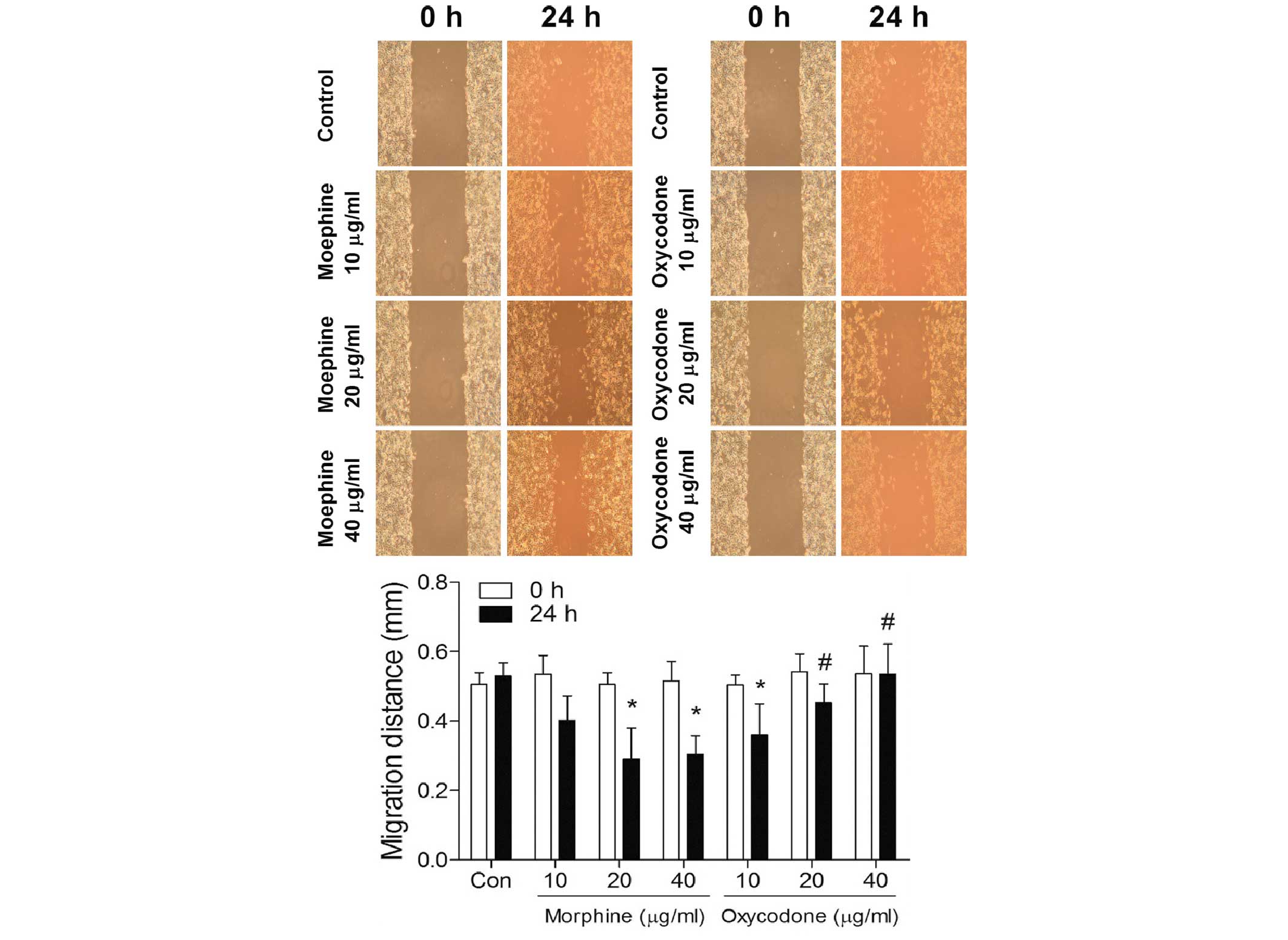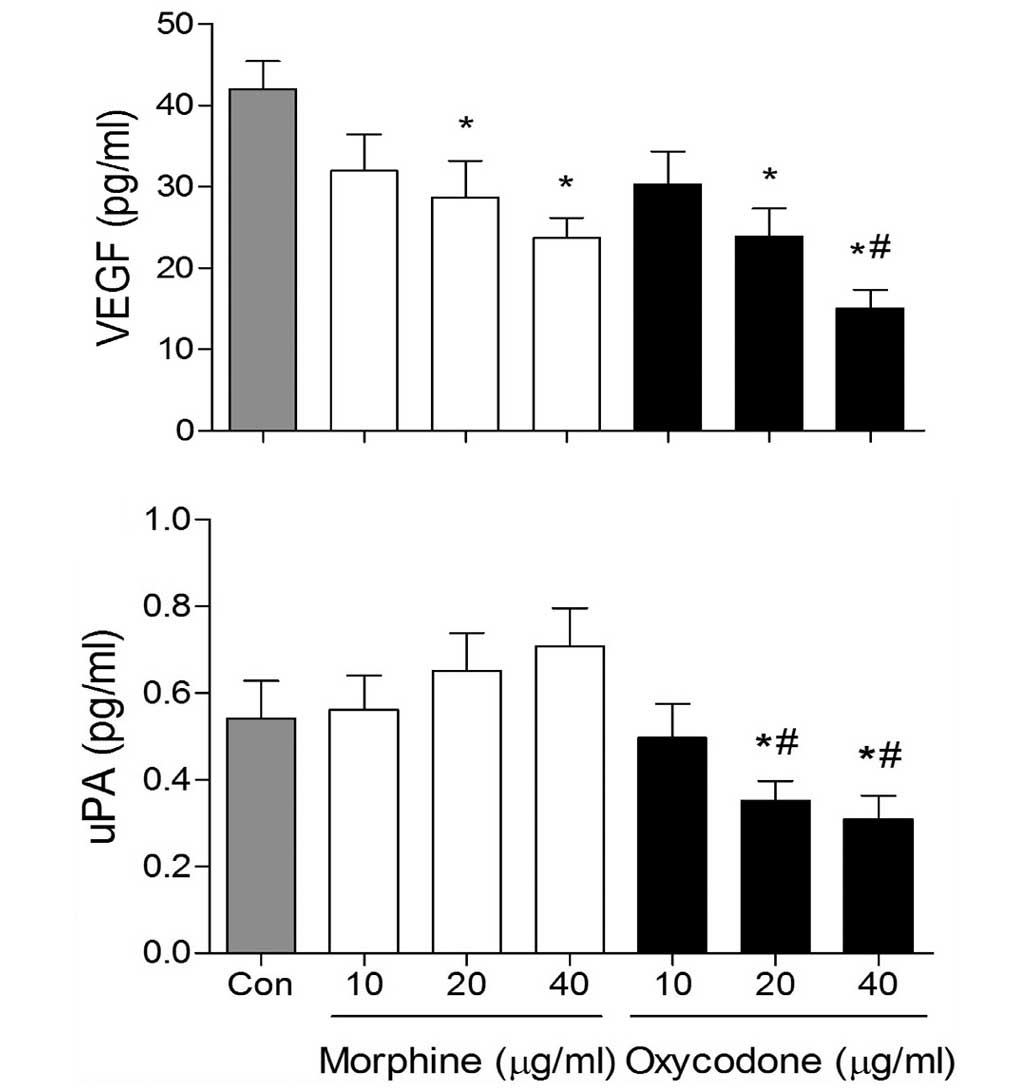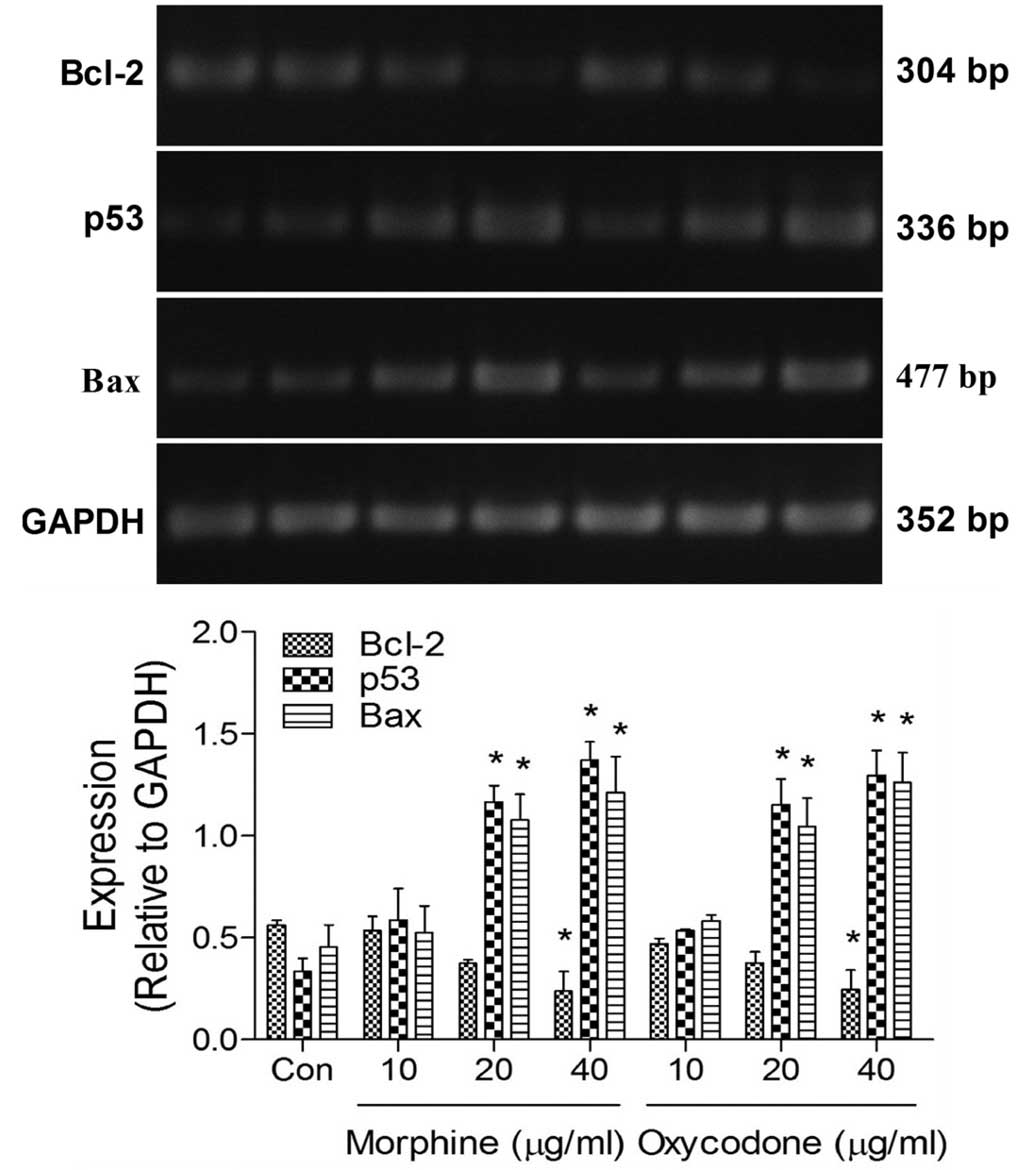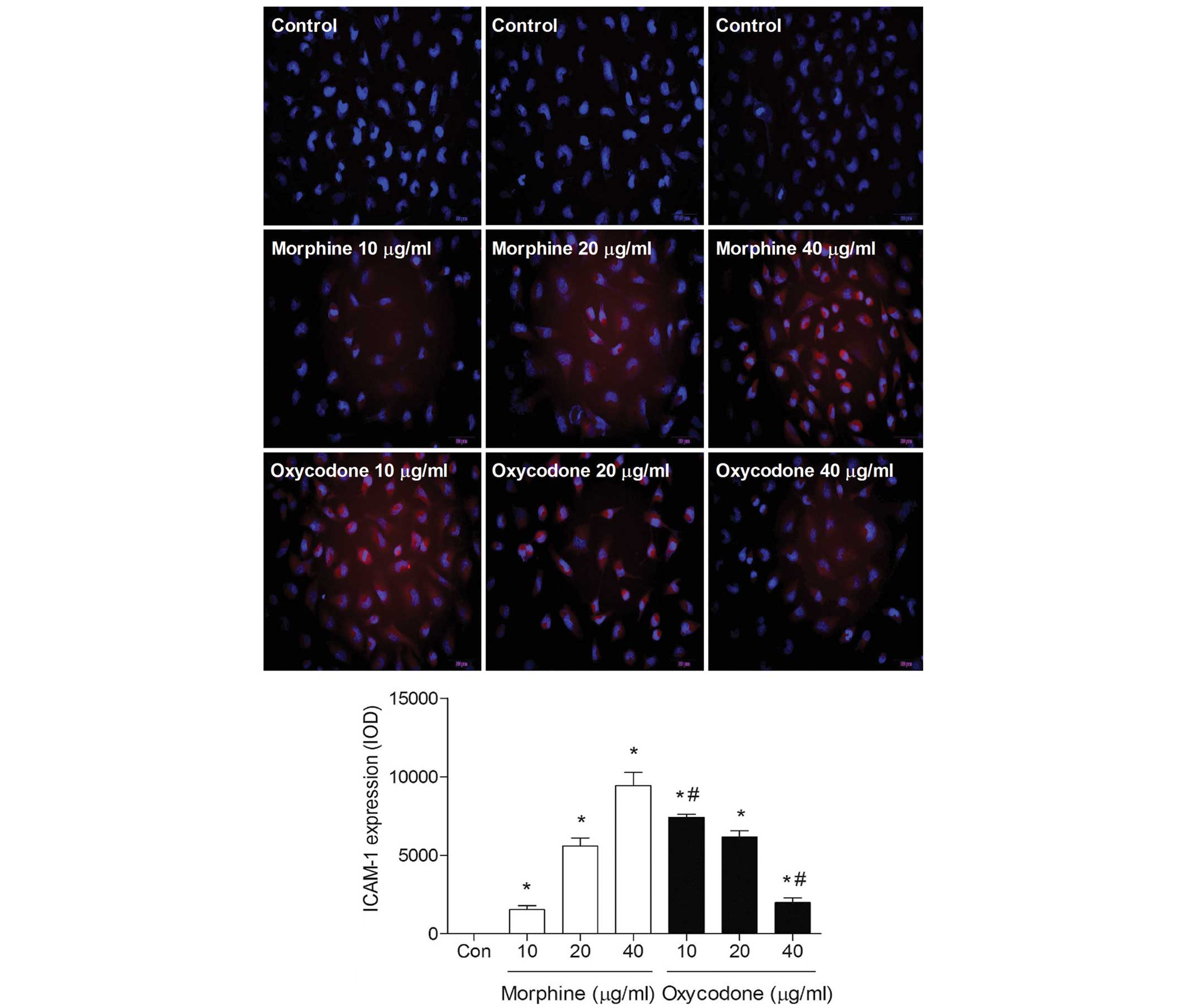|
1
|
Siegel R, Naishadham D and Jemal A: Cancer
statistics, 2012. CA Cancer J Clin. 62:10–29. 2012. View Article : Google Scholar : PubMed/NCBI
|
|
2
|
Liang H, Gu M, Yang C, Wang H, Wen X and
Zhou Q: Sevoflurane inhibits invasion and migration of lung cancer
cells by inactivating the p38 MAPK signaling pathway. J Anesth.
26:381–392. 2012. View Article : Google Scholar : PubMed/NCBI
|
|
3
|
Snyder GL and Greenberg S: Effect of
anaesthetic technique and other perioperative factors on cancer
recurrence. Br J Anaesth. 105:106–15. 2010. View Article : Google Scholar : PubMed/NCBI
|
|
4
|
Afsharimani B, Cabot P and Parat MO:
Morphine and tumor growth and metastasis. Cancer Metastasis Rev.
30:225–238. 2011. View Article : Google Scholar : PubMed/NCBI
|
|
5
|
Cata JP, Bauer M, Sokari T, Ramirez MF,
Mason D, Plautz G and Kurz A: Effects of surgery, general
anesthesia, and perioperative epidural analgesia on the immune
function of patients with non-small cell lung cancer. J Clin
Anesth. 25:255–262. 2013. View Article : Google Scholar : PubMed/NCBI
|
|
6
|
Koodie L, Yuan H, Pumper JA, Yu H,
Charboneau R, Ramkrishnan S and Roy S: Morphine inhibits migration
of tumor-infiltrating leukocytes and suppresses angiogenesis
associated with tumor growth in mice. Am J Pathol. 184:1073–1084.
2014. View Article : Google Scholar : PubMed/NCBI
|
|
7
|
Boland JW, Foulds GA, Ahmedzai SH and
Pockley AG: A preliminary evaluation of the effects of opioids on
innate and adaptive human in vitro immune function. BMJ Support
Palliat Care. 4:357–367. 2014. View Article : Google Scholar : PubMed/NCBI
|
|
8
|
Suzuki M, Sakurada T, Gotoh K, Watanabe S
and Satoh N: Correlation between the administration of morphine or
oxycodone and the development of infections in patients with cancer
pain. Am J Hosp Palliat Care. 30:712–716. 2013. View Article : Google Scholar : PubMed/NCBI
|
|
9
|
Welden B, Gates G, Mallari R and Garrett
N: Effects of anesthetics and analgesics on natural killer cell
activity. AANA J. 77:287–292. 2009.PubMed/NCBI
|
|
10
|
Nguyen J, Luk K, Vang D, Soto W, Vincent
L, Robiner S, Saavedra R, Li Y, Gupta P and Gupta K: Morphine
stimulates cancer progression and mast cell activation and impairs
survival in transgenic mice with breast cancer. Br J Anaesth.
113(Suppl 1): i4–i13. 2014. View Article : Google Scholar : PubMed/NCBI
|
|
11
|
Roy S, Balasubramanian S, Sumandeep S,
Charboneau R, Wang J, Melnyk D, Beilman GJ, Vatassery R and Barke
RA: Morphine directs T cells toward T(H2) differentiation. Surgery.
130:304–309. 2001. View Article : Google Scholar : PubMed/NCBI
|
|
12
|
Gupta K, Kshirsagar S, Chang L, Schwartz
R, Law PY, Yee D and Hebbel RP: Morphine stimulates angiogenesis by
activating proangiogenic and survival-promoting signaling and
promotes breast tumor growth. Cancer Res. 62:4491–4498.
2002.PubMed/NCBI
|
|
13
|
Biki B, Mascha E, Moriarty DC, Fitzpatrick
JM, Sessler DI and Buggy DJ: Anesthetic technique for radical
prostatectomy surgery affects cancer recurrence: A retrospective
analysis. Anesthesiology. 109:180–187. 2008. View Article : Google Scholar : PubMed/NCBI
|
|
14
|
Mantyh PW: Cancer pain and its impact on
diagnosis, survival and quality of life. Nat Rev Neurosci.
7:797–809. 2006. View
Article : Google Scholar : PubMed/NCBI
|
|
15
|
Ordóñez Gallego A, González Barón M and
Espinosa Arranz E: Oxycodone: A pharmacological and clinical
review. Clin Transl Oncol. 9:298–307. 2007. View Article : Google Scholar : PubMed/NCBI
|
|
16
|
Nakamura A, Hasegawa M, Minami K, Kanbara
T, Tomii T, Nishiyori A, Narita M, Suzuki T and Kato A:
Differential activation of the µ-opioid receptor by oxycodone and
morphine in pain-related brain regions in a bone cancer pain model.
Br J Pharmacol. 168:375–388. 2013. View Article : Google Scholar : PubMed/NCBI
|
|
17
|
Fodale V, D'Arrigo MG, Triolo S, Mondello
S and La Torre D: Anesthetic techniques and cancer recurrence after
surgery. ScientificWorldJournal. 2014:3285132014. View Article : Google Scholar : PubMed/NCBI
|
|
18
|
Mathew B, Lennon FE, Siegler J,
Mirzapoiazova T, Mambetsariev N, Sammani S, Gerhold LM, LaRiviere
PJ, Chen CT, Garcia JG, et al: The novel role of the mu opioid
receptor in lung cancer progression: A laboratory investigation.
Anesth Analg. 112:558–567. 2011. View Article : Google Scholar : PubMed/NCBI
|
|
19
|
Lennon FE, Mirzapoiazova T, Mambetsariev
B, Salgia R, Moss J and Singleton PA: Overexpression of the
µ-opioid receptor in human non-small cell lung cancer promotes Akt
and mTOR activation, tumor growth, and metastasis. Anesthesiology.
116:857–867. 2012. View Article : Google Scholar : PubMed/NCBI
|
|
20
|
Kharmate G, Rajput PS, Lin YC and Kumar U:
Inhibition of tumor promoting signals by activation of SSTR2 and
opioid receptors in human breast cancer cells. Cancer Cell Int.
13:932013. View Article : Google Scholar : PubMed/NCBI
|
|
21
|
Lin X, Wang YJ, Li Q, Hou YY, Hong MH, Cao
YL, Chi ZQ and Liu JG: Chronic high-dose morphine treatment
promotes SH-SY5Y cell apoptosis via c-Jun N-terminal
kinase-mediated activation of mitochondria-dependent pathway. FEBS
J. 276:2022–2036. 2009. View Article : Google Scholar : PubMed/NCBI
|
|
22
|
Finley MJ, Happel CM, Kaminsky DE and
Rogers TJ: Opioid and nociception receptors regulate cytokine and
cytokine receptor expression. Cell Immunol. 252:146–154. 2008.
View Article : Google Scholar : PubMed/NCBI
|
|
23
|
Hsiao PN, Chang MC, Cheng WF, Chen CA, Lin
HW, Hsieh CY and Sun WZ: Morphine induces apoptosis of human
endothelial cells through nitric oxide and reactive oxygen species
pathways. Toxicology. 256:83–91. 2009. View Article : Google Scholar : PubMed/NCBI
|
|
24
|
Koodie L, Ramakrishnan S and Roy S:
Morphine suppresses tumor angiogenesis through a HIF-1alpha/p38MAPK
pathway. Am J Pathol. 177:984–997. 2010. View Article : Google Scholar : PubMed/NCBI
|
|
25
|
Suzuki S, Chuang LF, Doi RH and Chuang RY:
Morphine suppresses lymphocyte apoptosis by blocking p53-mediated
death signaling. Biochem Biophys Res Commun. 308:802–808. 2003.
View Article : Google Scholar : PubMed/NCBI
|
|
26
|
Singhal PC, Bhaskaran M, Patel J, Patel K,
Kasinath BS, Duraisamy S, Franki N, Reddy K and Kapasi AA: Role of
p38 mitogen-activated protein kinase phosphorylation and Fas-Fas
ligand interaction in morphine-induced macrophage apoptosis. J
Immunol. 168:4025–4033. 2002. View Article : Google Scholar : PubMed/NCBI
|
|
27
|
Cory S, Huang DC and Adams JM: The Bcl-2
family: Roles in cell survival and oncogenesis. Oncogene.
22:8590–8607. 2003. View Article : Google Scholar : PubMed/NCBI
|















